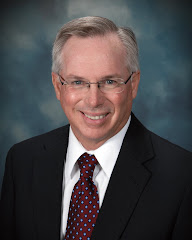By Representative Don Hineman
February 13, 2009 Volume 1, Number 4
Budget Agreement
On Thursday February 12 the House and Senate both passed a revised Fiscal Year 2009 budget. This was a painful and time consuming process, but the plan addresses the projected budgetary shortfall and insures that the state will end the year with a positive ending balance. The bill is a compromise in the truest sense of the word, as no member can be truly happy with every aspect of the accord. A real effort was made to distribute the painful cuts as evenly as possible. As you might expect, the bill contains victories and defeats for District 118. Funding for K-12 education was cut by $66 base state aid per pupil; however this is a less severe cut than the total 4.5% reduction imposed on most other recipients of state general fund monies. I am disappointed that the cities and counties in District 118 will not receive the scheduled payment from the Special City/County Highway fund. And the funds we allocated in the House to remove the Governor’s freeze on developmental disabilities waivers were removed in conference committee. However the bill does include additional funding for physical disabilities waivers and implements a rolling waiting list. And it is encouraging that the Children’s Initiative Fund, which funds early childhood education and intervention programs, was not cut. Ditto for the Local Environmental Protection Program and the Western Kansas Weather Modification program. And local units of government were shielded from even more draconian cuts to their funding that had been proposed in the Governor’s proposal and the original Senate bill. This was a difficult vote for me, but I sided with 69 other members in the House in voting yes. It is said that politics is the art of the possible, and this bill is an example of that. It is hard to vote for something that you know will impose real hardship on school districts, cities, counties, and the physically and developmentally disabled back home. But I believe this bill represents the best we could do, and to do nothing would be irresponsible. It is now up to the Governor to accept or reject the bill. It is my hope that she will sign it so we can quickly turn our attention to the even larger problem of crafting a FY 2010 budget.
Do We Have Too Many Units of Government?
Speaker of the House Mike O’Neal, who grew up in Scott City and now represents Hutchinson, in January pointed out that Kansas has many more units of local government than our neighboring states and he asserted this represents a degree of governmental inefficiency that should be examined closely. More recently Senator Chris Steineger of Kansas City made news when he circulated a map of Kansas with new county boundaries established. Here is a link to his editorial in the Wichita Eagle, http://www.kansas.com/781/v-print/story/688510.html and here is a look at the map: http://www.sunpublications.com/images/stories/Feb11Photos/consolidation.map.jpg His proposal would reduce the number of Kansas counties from 125 to 36. The proposal has generated a lot of talk and no small amount of scoffing and derision. A bill was introduced in the House Education Committee recently that would reduce state funding to school districts that are “small by choice” according to the bill’s author. He defined “small by choice” as those districts with fewer than 200 total enrollment and fewer than 200 square miles in the district. None of the districts in Northwest Kansas would be affected, though several would be perilously close. Odds are that neither Senator Steineger’s proposal nor the education bill will pass this year, but all of this commotion indicates one thing: people are taking a fresh look at how we govern in the state of Kansas and questioning whether there might be a better and more efficient way of delivering governmental services. Very few in Topeka would be in favor of forced consolidation of government, but there are many who would like to “assist” the process of voluntary consolidation or coordination. Out in the country this process is already happening on its own.
Here are a few examples:
1. Greely County and the cities of Tribune and Horace recently consolidated into a Unified Government structure.
2. Lane, Ness, and Rush counties merged their Extension districts several years ago.
3. Utica, Ransom, and Bazine school districts have consolidated into a single district.
4. Lane County and the City of Dighton have operated a joint police and sheriff’s department for years.
These examples indicate that folks in Western Kansas understand that there can be value in combining efforts to better provide services and reduce cost. I encourage this attitude, and I believe state government can put programs in place to assist this process while still leaving the decisions up to the local citizens. I believe there are three pertinent facts:
1. Local citizens know better than Topeka or Washington D.C. how their local government should function and what it should look like.
2. Achieving greater governmental efficiency should be the goal of us all.
3. The current economic crisis is an excellent time for everyone in government to take a fresh look at what we are doing and how we are doing it.
Old Farmer’s Advice: The best sermons are lived, not preached.
Quote of the Week: “Many attempts to communicate are nullified by saying too much”. –Robert Greenleaf





No comments:
Post a Comment